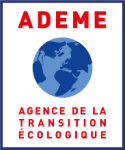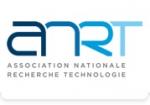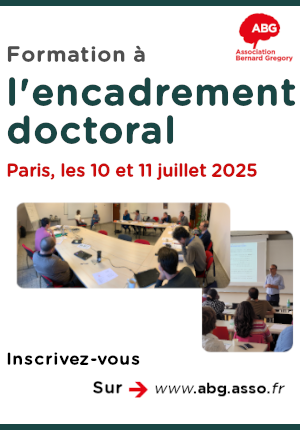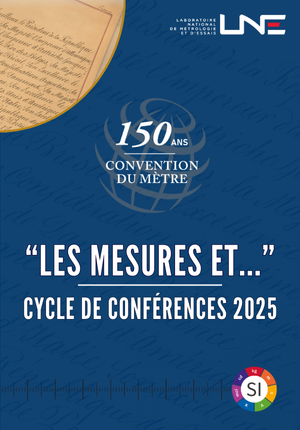Intelligent absorbing metasurfaces
| ABG-132196 | Sujet de Thèse | |
| 25/05/2025 | Financement de l'Union européenne |
- Electronique
- Sciences de l’ingénieur
Description du sujet
Metamaterials are artificial structures that exhibit properties not found in natural materials [1]. The engineering of metamaterials has had a significant impact on physics, specifically in the control of electromagnetic (EM) waves (microwaves, terahertz, and optics). The advent of these materials offers new possibilities for realizing physical phenomena such as negative refractive index [2] or invisibility cloaking [3]. These materials hold great promises for the development of new applications.
A metasurface is a two-dimensional version of a metamaterial, with a thickness that is significantly smaller than the wavelength [4-8] and consists of a periodic array of subwavelength cells. A metasurface can be directly printed using standard printed circuit board (PCB) technology on a rigid dielectric or flexible organic substrate, allowing it to conform to non-planar structures. Additionally, its ultra-thin thickness greatly reduces undesirable dielectric losses in transmission. Metasurfaces exhibit unique properties in transmission and reflection, where both amplitude and phase can be efficiently controlled.
The Electromagnetism & Signal department at the Energetics Mechanics Electromagnetics Laboratory (LEME) focuses on the study and engineering of the properties of metasurfaces. Specifically, the LEME’s activities include both theoretical and experimental investigations of metasurfaces for applications related to radiofrequency antennas, sensors, and microwave devices. By integrating lumped electronic components, different functionalities can be tailored from a single metasurface [9].
However, while these structures are reconfigurable and highly efficient, they require external user intervention to modify and control the functionality of the structure. In contrast, this doctoral thesis proposal aims to evolve towards fully autonomous and intelligent systems capable of sensing and capturing the external environment state and self-adapting for the desired application [10]. The main objective of this thesis is to combine expertise in reconfigurable metasurface design with embedded electronics to develop autonomous and intelligent metasurfaces that self-adapt dynamically to incoming waves (especially in dynamic environments) for stealth.
- V. G. Veselago, “The electrodynamics of substances with simultaneously negative values of e and m,” Sov. Phys. USPEKHI, vol. 10, no. 14, pp. 509-514, 1968.
- D. R. Smith, W. J. Padilla, D. C. Vier, S. C. Nemat-Nasser, and S. Schultz, “Composite medium with simultaneously negative permeability and permittivity,” Phys. Rev. Lett., vol. 84, no. 18, pp. 4184-4187, 2000.
- D. Schurig, J. J. Mock, B. J. Justice, S. A. Cummer, J. B. Pendry, A. F. Starr, D. R. Smith, “Metamaterial electromagnetic cloak at microwave frequencies,” Science, vol. 314, pp. 977-980, 2006.
- C. L. Holloway, E. F. Kuester, J. A. Gordon, J. O’Hara, J. Booth, D. R. Smith, “An overview of the theory and applications of metasurfaces: The two-dimensional equivalents of metamaterials,” IEEE Antennas Propag. Mag., vol. 54, pp. 10-35, 2012.
- H.-T. Chen, A. J. Taylor, N. Yu, “A review of metasurfaces: physics and applications,” Rep. Prog. Phys., vol. 79, p. 076401, 2016.
- S. B. Glybovski, S. A. Tretyakov, P. Belov, Y. S. Kivshar, C. R. Simovski, “Metasurfaces: from microwaves to visible,” Phys. Rep., vol. 634, pp. 1-72, 2016
- H.-H. Hsiao, C. H. Chu, D. P. Tsai, “Fundamentals and applications of metasurfaces,” Small methods, vol. 1, p. 1600064, 2017
- B. Ratni, “Étude et conception d’antennes à base de métasurfaces destinées aux applications spatiales et aéronautiques,” Thèse de doctorat de l’université Paris Saclay, 2017.
- R. Feng, B. Ratni, J. Yi, Hailin Zhang, A. de Lustrac, S. Burokur “Versatile metasurface platform for electromagnetic wave tailoring,” Photon. Res., vol. 9, n. 9, pp. 1650-1659, 2021.
- H.-Y. Li, H.-T. Zhao, M.-L. Wei, H.-X. Ruan, Y. Shuang, T. J. Cui, P. del Hougne, L. Li, “Intellignet electromagnetic sensing with learnable data acquisition and processing,” Patterns, vol. 1, p. 100006, 2020.
Prise de fonction :
Nature du financement
Précisions sur le financement
Présentation établissement et labo d'accueil
The LEME is a multidisciplinary research unit of Université Paris Nanterre.
This PhD thesis is part of a European project and will be carried out at the LEME and will strongly involve the Electromagnetism and Radar department (DEMR) of the ONERA. The PhD candidate will ger involved in meetings with other European partners of the consortium.
Profil du candidat
Required education level: Master or equivalent degree in electrical engineering, photonics or physics.
Duration: 36 months.
Required background: antenna theory, microwave engineering, antenna arrays, periodic structures and embedded electronics. Knowledge of French is not required.
Apply as soon as possible (no later than July 31, 2025).
Vous avez déjà un compte ?
Nouvel utilisateur ?
Vous souhaitez recevoir nos infolettres ?
Découvrez nos adhérents
 SUEZ
SUEZ  ADEME
ADEME  MabDesign
MabDesign  Nokia Bell Labs France
Nokia Bell Labs France  Aérocentre, Pôle d'excellence régional
Aérocentre, Pôle d'excellence régional  Laboratoire National de Métrologie et d'Essais - LNE
Laboratoire National de Métrologie et d'Essais - LNE  ONERA - The French Aerospace Lab
ONERA - The French Aerospace Lab  PhDOOC
PhDOOC  MabDesign
MabDesign  Tecknowmetrix
Tecknowmetrix  TotalEnergies
TotalEnergies  Institut Sup'biotech de Paris
Institut Sup'biotech de Paris  Groupe AFNOR - Association française de normalisation
Groupe AFNOR - Association française de normalisation  ANRT
ANRT  CESI
CESI  ASNR - Autorité de sûreté nucléaire et de radioprotection - Siège
ASNR - Autorité de sûreté nucléaire et de radioprotection - Siège  CASDEN
CASDEN  Ifremer
Ifremer  Généthon
Généthon





